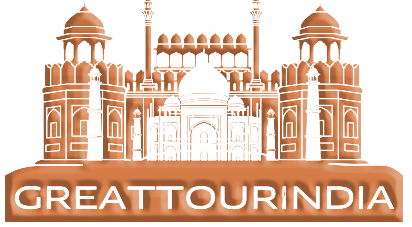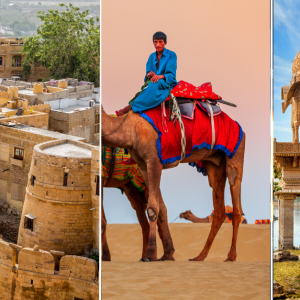India’s rich history is reflected in its monuments, many of which are iconic symbols of the country’s cultural and architectural prowess. Among the most sought-after destinations in India are Delhi, Agra, and Jaipur, collectively known as the Golden Triangle. These cities offer travelers the chance to explore historic monuments, centuries-old forts, and grand palaces that narrate stories of the past. Here’s a look at the top five historical monuments to visit in these cities.
1. Taj Mahal (Agra)
The Taj Mahal, one of the Seven Wonders of the World, is perhaps the most famous historical monument in India. Located in Agra, this magnificent white marble mausoleum was built by Emperor Shah Jahan in memory of his beloved wife Mumtaz Mahal. The Taj Mahal is not only a symbol of love but also an architectural marvel, showcasing intricate carvings, stunning gardens, and breathtaking symmetry.
Key Highlights:
- UNESCO World Heritage Site.
- Best viewed at sunrise and sunset.
- Located on the banks of the Yamuna River.
Visiting the Taj Mahal is an essential part of any tour to Agra and a highlight of the Golden Triangle.
2. Red Fort (Delhi)
The Red Fort, also known as Lal Qila, is one of the most important landmarks in Delhi. Built by the Mughal emperor Shah Jahan in the mid-17th century, the fort’s massive red sandstone walls are an iconic feature. The fort is a fusion of Persian, Timurid, and Indian architecture, and it houses several museums and structures, including the Diwan-i-Am (Hall of Public Audience) and Diwan-i-Khas (Hall of Private Audience).
Key Highlights:
- UNESCO World Heritage Site.
- A symbol of India’s independence; it’s where the Prime Minister hoists the national flag every Independence Day.
- Explore the fascinating museums inside the fort.
A must-see during your trip to Delhi, the Red Fort is a testament to India’s imperial past.
3. Qutub Minar (Delhi)
The world’s tallest brick minaret is the Qutub Minar, another UNESCO World Heritage Site. Standing at 73 meters, this towering structure was built by Qutb-ud-Din Aibak in 1193 and is an excellent example of Indo-Islamic Afghan architecture. The Qutub Minar was constructed to mark the beginning of Muslim rule in India, and it has since become a symbol of the country’s historical fusion of cultures.
Key Highlights:
- Located in Mehrauli, Delhi.
- A towering example of Indo-Islamic architecture.
- surrounded by stunning historical buildings and ruins, such as Delhi’s Iron Pillar.
The Qutub Minar is a must-visit for those looking to understand Delhi’s historical roots.
4. Amber Fort (Jaipur)
Located in Jaipur, the Amber Fort is a majestic hilltop fortress built in the 16th century by Raja Man Singh. With its blend of Hindu and Mughal architecture, the Amber Fort stands as a stunning example of the opulence of Rajasthan’s royal history. The fort features intricate mirror work, beautiful gardens, and stunning courtyards, making it one of the most picturesque forts in India.
Key Highlights:
- Known for its stunning Sheesh Mahal (Mirror Palace).
- provides sweeping views of Maota Lake and the surrounding hills.
- Elephant rides are available to take visitors up to the fort.
The Amber Fort is a highlight of Jaipur and is sure to leave you in awe of its grandeur.
5. City Palace (Jaipur)
The City Palace in Jaipur is a sprawling royal residence that blends Mughal and Rajasthani architectural styles. Built by Maharaja Sawai Jai Singh II in the 18th century, the palace consists of courtyards, gardens, and exquisite rooms. The palace complex houses museums and galleries showcasing royal artifacts, making it an insightful stop for history and culture enthusiasts.
Key Highlights:
- Located in the heart of Jaipur.
- The Maharaja of Jaipur and his family call this place home.
- Explore the beautiful courtyards and museums inside the palace.
The City Palace offers a glimpse into the royal lifestyle and is one of Jaipur’s most popular attractions.
Conclusion
Delhi, Agra, and Jaipur are home to some of India’s most historically significant and visually stunning monuments. From the grandeur of the Taj Mahal to the architectural brilliance of the Amber Fort and Red Fort, these cities provide a unique opportunity to witness India’s rich cultural heritage. Whether you are a history buff, a photography enthusiast, or simply someone looking to immerse yourself in India’s past, these monuments are sure to leave a lasting impression.
Planning a trip to these destinations? Great Tour India offers guided tours and packages that ensure you experience the best of these historical sites with expert guidance and seamless travel arrangements.




